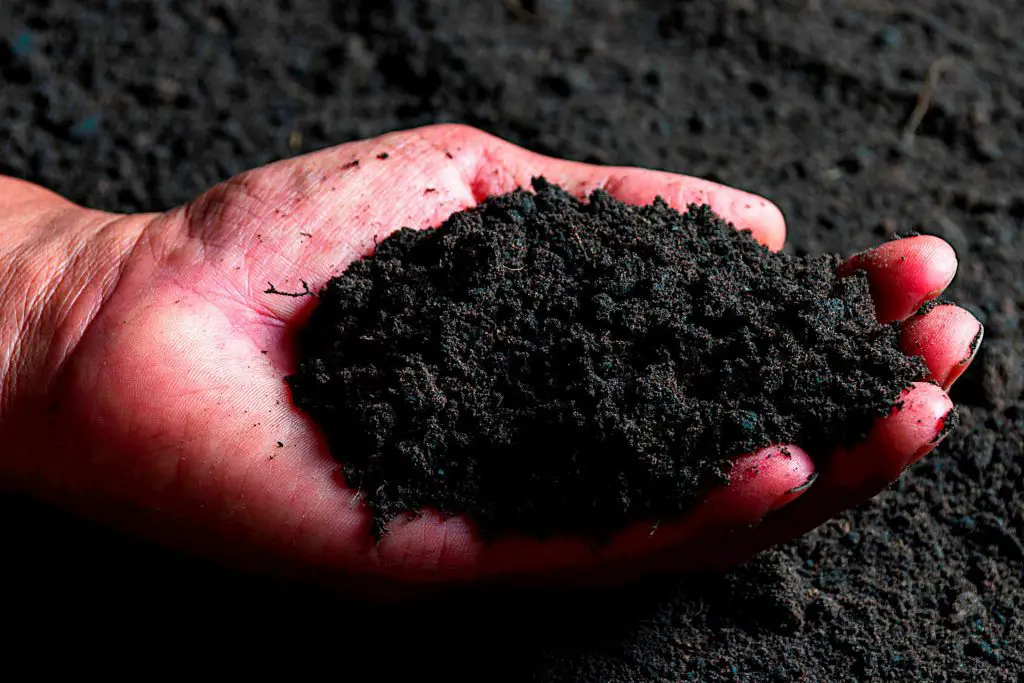The Easy Way to Get The Right Compost Ratio of Browns to Greens
- Organic Material is considered brown if it has a carbon-to-nitrogen ratio of more than 30:1 (C/N).
- Organic material is considered green if it has a carbon-to-nitrogen ratio of less than 30:1 (C/N).
- You need to know the C/N values of your organic material to get the right overall ratio.
- Follow simple step-by-step calculations to get the right ratio for the composting process you are using.
There is an easy way to work out the right compost ratio of browns to greens. It is important to get this right in order to have an efficient and timely decomposition process.
One of the most significant factors that determine the rate of decomposition is the ratio between the carbon and nitrogen present in the compost pile. The greater the amount of nitrogen, the faster the decomposition process is likely to be.
Organic Materials, Greens or Browns?

To help us with our calculations we split organic materials into carbon-rich (brown) and nitrogen-rich (green). The problem with this demarcation is that all organic materials have considerably higher carbon content than nitrogen. So, when we talk of nitrogen-rich materials we are only doing so in relationship with other materials.
Therefore, a dividing point is artificially created. It is at this point, generally accepted to be 30 parts carbon to 1 part nitrogen (30:1), that we can say this material is either green or brown.
What Kinds of Materials Are Considered to Be Brown for Composting?
An organic material is considered brown if its carbon content is greater than 30 parts carbon to 1 part nitrogen 30:1 (C/N).
Brown materials include dry leaves, pine needles, straw, woodchips, sawdust, paper, cardboard, woody plant materials, and grains.
What Kinds of Materials Are Considered to Be Green for Composting?
Organic material is considered green if it has a carbon content of fewer than 30 parts carbon to 1 part nitrogen 30:1 (C/N).
Green materials include fresh grass clippings, kitchen waste (fruit scraps vegetable scraps), coffee grounds, bread, wood ash, and animal manure.
The Right Carbon-to-Nitrogen Ratios for Your Compost Pile

The organic matter in your compost pile will break down at different rates depending on the overall carbon-to-nitrogen ratio of your compost material.
The specific ratio for the perfect compost pile will depend upon the composting process you are following. but it will range from 25:1 to 35:1 (C/N).
Getting the Ratio Right
This is all well and good until you appreciate there is a huge disparity in carbon-to-nitrogen ratios across all organic materials. For many gardeners, trying to calculate what is a scientific ratio can be daunting when standing next to a wheelbarrow full of leaves.
It is because of this that gardeners are attracted to the idea of just thinking in regard to general green-to-brown ratios. The argument is that in terms of calculation, it is easier to lump all the green materials together at one value and all brown materials together at another value.
The Madness of Brown-to-Green Ratio Advice
Sadly, while it might be well-intentioned, any experienced composter would know that evaluating what goes into your compost pile on the basis all greens are one value and all browns are another if not properly worked out, is not good advice.
The problem is that the nitrogen content of some green materials can be three times that of others and in terms of brown materials the difference could be as much as 10 or 20 times the amount of nitrogen.
A quick trawl through other composting sites and you will note that the ratios that are given can be widely different. One site suggested, “1 to 1, 50% green compost and 50% brown compost”. Another “ratio of 3 or 4 parts browns to 1 part greens”. In others, the advice is “about 4:1 browns” or “2-to-1 ratio”. Which is right?
In theory, they all could be right or miles wrong, but it would depend entirely on what the green and brown materials were. This is the reason why you can’t just ‘lump’ them all together as either greens or browns without knowing what their overall ratios are.
Does the Ratio between Green and Brown Materials Matter?

The answer to this is it depends on the type of composting process you are using. The thing to remember is that all organic material will eventually decompose into humus.
If you just created a pile of wood chips and didn’t add anything else, some of it would decompose into usable compost after two or three years, all of it eventually fully decomposing after another few years. On the other hand, you could end up with a compost heave full of excess nitrogen which can result in methane release and a foul odor
If you are using a passive composting process your compost ratio of brown to green materials only going to determine the length of time it takes for your pile to become finished compost. If it doesn’t matter to you when this will be then the ratio is going to be a secondary issue.
However, if you are following a more active composting process, such as hot composting, then the precise compost ratio of browns to greens becomes incredibly important. It is in these cases where the carbon-to-nitrogen ratios and the volume of each material going into that pile matter.
But even for some less active processes, like cold composting, if you don’t get the ratio roughly right then the finished compost you expect to see in six months could take twelve or more.
How to Calculate The Right Compost Ratio of Browns to Greens
The best method is a cross somewhere between the two, although you will need to have a good knowledge of the carbon-to-nitrogen ratios, you can still combine all your greens into one value and your brown into another.
The Easy Way To Calculate the Ratio
The first thing to do is to calculate the ratio of your green and brown mixes. What is the ratio for all your combined greens and all your combined browns?
Let’s assume you want to get a pile with a carbon-to-nitrogen ratio of around 35:1 (C/N).
Step One: Calculate the Overall Ratio of Your Greens
Assume your green materials are made up of 50% grass clippings and 50% kitchen scraps.
- Kitchen Scraps around 14:1
- Grass Clippings: 20:1
| Material | Carbon | Nitrogen |
| Kitchen Scraps 50% | 14 | 1 |
| Grass Clippings 50% | 20 | 1 |
| Calculation | 14+20=34 | 1+1 =2 |
| Simplified | 34/2 | 2/2 |
| Overall C/N | 17 | 1 |
Step Two: Calculate the Overall Ratio of Your Browns
Assume your brown materials are made up of 75% dry leaves and 25% bark.
- Fall Leaves 40:1
- Bark 100:1
| Material | Carbon | Nitrogen |
| Fall Leaves 75% | 40 | 1 |
| Bark 25% | 100 | 1 |
| Half the amount of bark to leaves | 100/2=50 | |
| Calculation | 50+40=90 | 1+1 =2 |
| Simplified | 90/2 | 2/2 |
| Overall C/N | 45 | 1 |
Step Three: Calculate the Difference Between the overall ratios for Greens and Browns
Overall Browns ratio 45:1 minus Overall Greens ratio 17:1
45:1 -17:1 = 28:1
Step Four: Adjust the amounts to get to the ratio we are aiming for of 35:1
The difference between the browns ratio and the required ratio is 45-35=10
Calculate the percentage difference between the brown mix carbon and the required ratio and the overall difference between the brown to green ratio.
(10/28)x100 = 36%
This means that you require 64% brown and 36% green to achieve the 35:1 ratio.
Compost Ratio Calculator
If you are looking for an easier way to calculate the ratio of greens to browns in your compost pile then we have built a handy calculator that will give you the overall carbon to nitrogen ratio C : N of your compost materials as well as provide individual breakdowns of the carbon and nitrogen content for the amount of each organic material that you have added.
